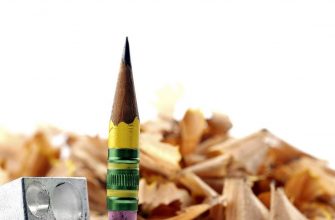Kazan
Сочинение на тему «Казань»
на английском языке с переводом на русский язык
Kazan
Казань
Kazan is one of the largest (the population is over a million citizens) and the most ancient cities of Russia, the capital of the Republic of Tatarstan. It is an important economic, scientific, religious, and cultural center where various cultures (Tatar, Russian, and European) and religions (Islam and Orthodox Christianity) coexist harmonically. Kazan is situated on the great river Volga; its river port and international airport are significant as trading and transport junctions. Some architectural objects of Kazan are in the list of UNESCO world heritage sites. Sports life of Kazan also develops quickly: there are famous local football, hockey and basketball clubs, and in recent years, the city held several large-scale competitions.
Казань – один из крупнейших (население превышает миллион человек) и древнейших городов России, столица Республики Татарстан. Она является важным экономическим, научным, религиозным и культурным центром, где разные культуры (татарская, русская и европейская) и религии (ислам и православное христианство) гармонично сосуществуют. Казань расположена на великой реке Волге; её речной порт и международный аэропорт – значимые торговые и транспортные узлы. Некоторые архитектурные объекты Казани внесены в список памятников Всемирного наследия ЮНЕСКО. Спортивная жизнь Казани также быстро развивается: там есть знаменитые местные футбольный, хоккейный, баскетбольный клубы, а в последние годы в городе прошло несколько масштабных соревнований.
According to historians, Kazan was founded at the beginning of the 11 th century. In the Middle Ages Kazan became a trading (blacksmithing, leather production, etc.) and cultural center of the Golden Horde. Afterward, it became the capital of Kazan Khanate, but in the 16 th century, Ivan IV joined it to Russia by force. As a part of Russian Empire, Kazan improved its industry, education (the third university in the country was opened there), and the level of life. Although Kazan suffered during the Civil War, it grew in the 20 th century turning into a megacity.
Согласно мнению историков, Казань была основана в начале XI
века. В Средние века Казань стала торговым (кузнечное дело, кожевенное производство и т.д.) и культурным центром Золотой Орды. Впоследствии она стала столицей Казанского ханства, но в XVI веке Иван IV силой присоединил его к России. Пока Казань была в составе Российской империи, развивались её промышленность, образование (третий университет в стране был открыт там) и уровень жизни. Хотя Казань пострадала в ходе Гражданской войны, в XX
веке она выросла, превратившись в мегаполис.
Nowadays, due to numerous landmarks, Kazan is a popular tourism direction. The ensemble of its medieval Kremlin is very impressive, as well as fine mosque Qol Sharif. Everyone enjoy visiting parks, museums, theaters of Kazan; besides, this city is a center of many national and international festivals of classical and modern (including ethnic) music.
В наши дни, благодаря многочисленным достопримечательностям, Казань – популярное туристическое направление. Ансамбль её средневекового Кремля очень впечатляющ, как и прекрасная мечеть Кул-Шариф. Все с удовольствием посещают парки, музеи, театры Казани; кроме того, этот город – центр многих национальных и международных фестивалей классической и современной (в том числе этнической) музыки.
Тема Казань на английском языке: достопримечательности, рассказ о городе
Kazan is the capital of Tatarstan Republic. [Кезэн ис зэ кэпитал оф Татэстэн Репаблик] – Казань столица Республики Татарстан.
Kazan is on the list of UNESCO World Heritage cities [Кезэн ис он зэ лист оф Юнеско ворлд хэритидж ситис] – Казань находится в списке городов Всемирного наследия ЮНЕСКО.
The people of Kazan city have their own culture, traditions and language. [Зэ пипл оф Кезэн сити хэв вей аун калчэ,традишионал, энд лэнгвидж]- У жителей Казани своя культура, традиции и язык.
The most interesting sights in Kazan [Зэ мост интерестинг сайтс ин Кезэн] – Самые интересные достопримечательности в Казани:
The Kazan Kremlin [Зэ Кезэн Крэмлин] – Казанский Кремль.
The Kazan Kremlin is a unique historiсal and cultural monument. [Зэ Кезэн Крэмлин ис э юник хисторикал энд калчэрал моньюмент] – Казанский Кремль это уникальный исторический и культурный памятник.
Suyumbike tower [Сюмбике тауэр] – Башня Сююмбике.
It is seven-storey leaning tower, the legendary architectural symbol of Kazan [Ит ис сэвэн стори линин тауэр,зэ леджендари акитэкшал симбэл оф Кезэн] – Это семиэтажная «падающая» башня, легендарный архитектурный символ Казани.
Zilant Dragon [Зилант Дрэгон] – Дракон Зилант
Zilant is a flying serpent, legendary protector of the city. [Зилант ис э флаин серпент, леджендари прэтектэ оф зэ сити] – Зилант летающий змей, легендарный защитник города.
Blue Lake [блю лейк] – Голубое озеро
Blue lake is located in 20 km from Kazan. [Блю лейк ис локейтед ин твенти киламетэрс фром Кезэн] – Голубое озеро находится в 20 километрах от Казани. This lake has blue colour and ability not to freeze even in the winter. [Вис лейк хэс блю калэ энд эбилэти нот ту фриз ивэн ин зэ винтэ] – Это озеро имеет голубой цвет и способность не замерзать даже зимой.
National Museum of Tatarstan Republic [Нашэнэл Мьузиам оф Тэтастэн Репаблик]- Национальный музей Республики Татарстан
It is the largest museum in Tatarstan that founded in 1894 [Ит ис зэ ладжест мьузиам ин Тэтастэн вят фаундэд ин эйтин наинтин фо] – Это крупнейший музей в Татарстане который был открыт в 1984 году. There are over 800 thousand units in the museum’s collection. [Зэ ар эувэ эйт хандрид фаузэнд юнит ин зэ мьузиамс коллекшэн] – В коллекции музея более 800 тысяч экспонатов.
Temple of All Religions [Тэмпл оф ол релиджонс] – Храм всех религий
It is an architectural complex in Kazan. [Ит ис эн акитекшэл комплекс ин Кезэн]- Это архитектурный комплекс в Казани. The Temple consists of several types of religious architecture including a synagogue, an Orthodox church, a mosque. [Зэ Тэмпл консист оф северэл тайпс оф релиджэс акитекшэ инклудинг э синэгог, эн эфэдакс чётч, э маск] – Храм состоит из нескольких видов религиозной архитектуры, включая синагогу, православную церковь, мечеть.
Kazan’s central market [Кэзенс сэнтрэл макет] – Центральный рынок Казани
The Central Market is a classic bazaar in the open air. [Зэ центрэл Макет ис э класски бэза ин оупен эир] – Центральный рынок это классический базар на открытом воздухе. Here you can find everything. [Хиэ ю кэн файнд эврифин] – Здесь вы можете найти все что угодно.
The Kazan Kremlin: it will captivate you
It is just not possible to visit Kazan and not visit its Kremlin. Located in the city centre, the entrance is free, though you have to pay the visit fee to the museums inside. Below I’ll explain how to organize the visit from the Kul Sharif Mosque, one of the largest in Europe, to the Cathedral of the Annunciation, a great Orthodox temple.
1. The Russian Kremlins
The old Russian cities were not guarded by walls. However, in their centre parts, in which the palace of the nobles were located, the cathedral and other relevant buildings, were surrounded by these defenses. Thus, the word Kremlin refers to the citadel in which these important buildings were located, as well as the walls that surrounded them.
In Russia, many Kremlins are still preserved, being the most known the Moscow Kremlin. The Kazan Kremlin, though not as well-known as the Moscow Kremlin, is also romantic and captivating.
Unlike other Kremlins, in Kazan the white color is predominant in most of its buildings and temples. Some of the walls of the Kazan Kremlin, made of white limestone, date back to the 16th and 17th centuries.
It was built in the sixteenth century at the request of Ivan the Terrible on the ruins of the old castle of the Khanate of Kazan. In 2000, it was declared a World Heritage Site by Unesco.
2. The Kazan Kremlin, an encounter of cultures
The Kazan Kremlin is located in the center of the city, strategically at the confluence of the Volga and Kazanka rivers.
Within the Kremlin, only 100 meters separate the Kul Sharif Mosque, one of the largest in Europe, and the Cathedral of the Annunciation, a great Orthodox temple. Islam and Christianity coexist in this city, also called the Istanbul of the Volga, a city with which it is entwined.
We must not lose sight of the fact that half of the population of the Republic of Tatarstan, whose capital is Kazan, is Muslim, while the rest are mostly Orthodox Christians, so it is not difficult to find groups of friends or couples that mix these and other religions.
In the Kazan Kremlin there is also the residence of the President of the Republic of Tatarstan, as well as government offices.
Below I will explain what you can see in the Kazan Kremlin and how to organize the visit.
3. Schedules and tickets to the Kazan Kremlin
The entrance to the Kazan Kremlin is free and open 24 hours a day, 7 days a week.
Inside, the Kul Sharif Mosque and the Cathedral of the Annunciation stand out (they are open to the public from 9:00 a.m. to 7:30 p.m.), as well as the Söyembikä Tower, the most well-known symbol of Kazan.
In addition, the Kazan Kremlin houses seven museums and for these you have to pay a ticket. They open every day from 10 a.m. to 6 p.m., except on Fridays from 11:00 a.m. to 8:00 p.m. (closed on Mondays). These museums are the following:
There is also the option of buying a general ticket that costs 700 rubles and it gives you access to all the previous museums. Both general admission and individual tickets to museums can be purchased online in advance on the Kremlin’s website: http://tickets.kazan-kremlin.ru. Perhaps in the summer season it is worth buying them in advance, but the rest of the year, there are usually not many lines.

Taking a tour of the interior of the Kremlin and visiting the two main temples (the Kul Sharif Mosque and the Cathedral of the Annunciation) can take about 2 hours. However, visiting the rest of buildings and their museums can take at least 4 hours.
Where to eat in the Kazan Kremlin?
Inside the Kremlin, in the Museum of the Courtyard of the Canyons there is a cafeteria where you can eat, though leaving the Kremlin, in the direction of Bauman Street, you can find a great offer of much better restaurants.
4. What to see in the Kazan Kremlin
On this map of the Kazan Kremlin you can see the different buildings:
4.1. Accesses to the Kazan Kremlin
The outer wall of the Kazan Kremlin has a length of 1.8 kilometers, with a height of between 8 and 12 meters. Throughout it there are 13 towers, and access to the interior of the complex can be done through 2 doors located in:
4.2. Kul Sharif Mosque
The excursion to the Kazan Kremlin can begin from the Kul Sharif mosque, one of the largest in Europe (with a capacity of up to 8,000 speakers).
This mosque was burned down completely in the year 1552 by the troops of Ivan the Terrible, and has the name of Imam Kul Sharif, who died along with numerous students when defending the temple.
In 1996, the total reconstruction of this mosque began, which was inaugurated on July 24, 2005, being the starting point of the celebrations dedicated to the Millennium of Kazan, a city founded in the year 1005.
Several countries, including Saudi Arabia and the United Arab Emirates, contributed to the reconstruction of the mosque, which cost about 400 million dollars. The mosque, both outside and inside, is spectacular and is equipped with a night lighting system that is worth seeing.
Today, the main function of the mosque is the divulgation of Islamic culture through its modern museum (located in the basement of the mosque), though during the Muslim celebrations, thousands of people are gathered to pray in it. It also houses a library, a publishing house and the Imam building.
4.3. Cathedral of the Annunciation
After the siege of Kazan by Ivan the Terrible, the Cathedral of the Annunciation was erected, which was designed by the same architects of St. Basil’s Cathedral in Moscow: Ivan Barma and Postnik Jakovlev. It is the oldest building that is preserved inside the Kremlin.
Throughout time, the cathedral has suffered numerous fires, the most serious ones occurred in 1742 and 1842. In September 1918, the Red Army assaulted Kazan with the aim of defeating the Czechoslovak legions. The Kremlin was bombed and thus the five domes of the cathedral were destroyed. It would be necessary to wait until 1973 for reconstruction work to begin.
The last of the restorations of this cathedral took place between 1995 and 2005, in which the interior of the building was completely intervened, replacing many icons and building a new iconostasis.
Inside, the cathedral now houses a museum displaying more than a hundred objects, works of art and documents on the most important events in the history of the Orthodox Church from the mid-sixteenth century to the present.
From the outer square where this cathedral is located, there is a fantastic viewpoint from which you have spectacular views of the city and the Kazanka River.
In a small garden, next to the Cathedral of the Annunciation, it is located the monument dedicated to the architects of the Kazan Kremlin, which was inaugurated in 2003. The monument depicts two figures: a seated Russian architect dressed in a medieval costume and holding a plan of the Kremlin and a Tatar architect standing next to him, dressed in the traditional dress of the Kazan Khanate.
4.4. Söyembikä Tower
The Söyembikä Tower, inside the Kremlin, is probably the most well-known symbol of Kazan, such as St. Basil’s Cathedral in Moscow or the Eiffel Tower in Paris. There is a belief that if you touch its walls with your hand and make a wish, it will come true.
It is one of the tallest structures in the Kazan Kremlin (58 meters) and is included in the list of the so-called Leaning Towers (the one in Pisa is the most famous). It is estimated that at present it has a deviation 1.98 meters with respect to the vertical.
Many researchers date its construction between the seventeenth and eighteenth centuries. At the beginning of the 20th century, the architect Aleksei Shchusev made a replica of the structural style of this tower in the Railway Station of Kazan in Moscow.
Below the tower are the remains of the Khan mausoleum, where several Kazan Khans are buried.
4.5.. The museums of the Kazan Kremlin
In addition to the museums, the Kul Sharif Mosque and the Cathedral of the Annunciation, inside the Kremlin you can also visit other museums of the most varied:
4.6. The Presidential Palace
Finally, it is worth highlighting the Kazan presidential palace, which was built between 1845 and 1848, under the direction of Tsar Nicholas I, inside the Kremlin. It is based on the Great Kremlin Palace in Moscow. It is located in the same place where the Khan (maximum ruler) of the Kazan Khanate had his palace. It is currently the residence of the President of the Republic of Tatarstan, as well as government offices.
5. Guided tours of the Kazan Kremlin
Lastly, there are several guided tours of the Kazan Kremlin, such as the guided tour of the GetYourGuide agency, which lasts an hour and a half.
Have you visited the Kazan Kremlin?
Credit of the photo of the Kul Sharif Mosque
Plans of the official website of the Kazan Kremlin
Рассказ про казанский кремль на английском языке с переводом
The Kazan Kremlin remains a unique architectural and historical monument, and rightly takes its place alongside the most remarkable world heritage objects. The uniqueness of the Kazan Kremlin consists of several distinctive and inimitable features. The Kazan Kremlin is:
Its military and commercial role was developed in its pre-Mongol days, from the 10th until the middle of the 13th century, when it became a fort. By the 12th century, it already featured as a stone fortress, a stronghold on the northern boundary of Volga Bulgaria.
From the second half of the 13th century until the first half of the 15th century the Kremlin, or, in Tatar, the Kerman, became the centre of the Kazan Princedom that formed part of the Golden Horde.
On the collapse of the Golden Horde, the Kremlin became the governmental and military base of the Kazan Khanate, which existed as an independent polity from 1438 until 1552.
The Kremlin retained its position of importance after the fall of Kazan to the Russians and was converted into the administrative and military centre of the annexed Middle Volga region (1552-1708). From 1708 onwards, it became the centre of the first, and, from the second half of the 18th century, the second Kazan district of the Russian empire.
Between 1922 and 1992 the Kremlin continued its role as an administrative centre, this time of the Tatar Autonomous Republic. In 1992 it finally became the state centre of the presidential Republic within the Russian Federation. A unique feature of the Kremlin is that it is home to the only operational centre of Tatar national culture and state power. It is here that the official residency of the President of Tatarstan and his administration are situated and, in keeping with established tradition, the Kazan Kremlin remains the location of various ministries and state bodies.
 |  |
 | Panorama of Kazan Kremlin |
The Kazan Kremlin is not only unique on account of its distinctive fortifications, buildings and temples. It is also without parallel because, historically and architecturally, the complex bears witness to the continuity of its history, to the lasting result of the centuries-long synthesis and matchless interchange of values between different cultures and civilizations.
Once it became the spiritual and governmental nucleus of the Tatar capital, the Kremlin never lost its rationale, forming and influencing all adjacent urban development through the ages of its existence.
The Kremlin’s location and its key monuments offer an outstanding example of the synthesis of Tatar and Russian architecture, combining various styles and echoing the influences of the continuous historical epochs. Casting an eye around the Kremlin complex one is able to distinguish clearly the epochal cultural influences of Volga Bulgaria, the Golden Horde and the Kazan Khanate respectively. Today, the Kremlin remains an outstanding example of the all-embracing fusion of Tatar, Italian and Russian architectural ideas.
The fixed geographical and historical location of the Kremlin is reflected in the written testimony of the Russian Prince Andrei Kurbsky with almost photographic precision. In his Narrative of the Great Duke of Muscovy, Kurbsky wrote:
Kurbsky’s testament not only amazes on account of the geographical accuracy of the description regarding the Kremlin’s location, but also gives an idea as to its contemporary size and capacity. Judging from this testimony, by the middle of the 15th century, the Kremlin already accommodated over thirty thousand people. It seems obvious that a citadel such as this would have had a long architectural history, and one which, despite major upheavals, would survive the fall of Kazan.
And yet, since no architectural traditions in the world exist by themselves, it could not be said that the Kremlin lost all traces of its previous incarnation in the mid-16th century. The remarkable unity of its architectural ensemble formed across the centuries once more reminds us of the fact that, in its historical genesis, Russian architecture itself experienced constant spiritual and conceptual influences from West European as well as Oriental traditions of architectural design and urban development. The builder of the Moscow Kremlin, Aristotle Fioravanti, recognized in the features of the ancient temples of the town of Vladimir the traditions of Italian and German masons, whereas the cupolas and the colorful ornamental palette of the old Russian churches clearly reflect an Oriental influence. It is far from incidental that the Scottish traveler Anthony Jenkinson, upon seeing the Kazan Kremlin from one of the Volga islands against the mouth of the Kazanka river, remarked:
«Kazan is a fair town, after the Rus and Tatar fashion, with a strong castle situated upon a high hill. It used to be walled round about with timber and earth, but now the Emperor of Russia has given order to pluck down the old walls and to build them again with free stone.»
After the fall of Kazan to the Russians, the Kremlin not only remained the quintessential part of the stately and spiritual life of Kazan and the Middle Volga region, but also continued in its role as a military fortress for many years. In 1599, Oruj Bek, the secretary of the Persian embassy to the Tsar Boris Godunov, who subsequently became a Christian in Spain and then became known as Don Juan of Persia, impressed in his records not only the role of the Kazan Kremlin, but also the ethnic and religious make-up of its population, which had so drastically changed in half a century after the Russian conquest:
 |  |
 | Kazan Kremlin in 1630 (from an ancient engraving) |
In 1636, accompanying the Schleswig-Holstein embassy to Persia, the German traveler Adam Oleary (who has left us the first known sketch of the Kazan Kremlin, although it was not very true to life) once again witnessed the fact that the Kazan Kremlin continued to fulfill its military and stately functions:
«This city, similar to all cities along the Volga river, is rounded with wooden walls, with towers, and its houses are also of wood, but the Kremlin of that city is adequately protected by its thick stone walls, cannon and soldiers. The Great Duke placed in the Kremlin not only a military commander, but also a special deputy so that both of them would govern the inhabitants and judge among them.»
The Dutch adventurer Jan Streiss, who visited Kazan in 1669, added to Oleary’s observations his own curious remarks showing that even at the end of the 17th century Kazan remained one of the main centres of international commerce on the Volga river:
This description, similar to all other accounts, reflects the dynamics of the architectural development of the Kremlin in its capacity as the historical centre of Kazan. After the Pugachev uprising was suppressed, the first comprehensive town planning project in Kazan was created. The originator of the plan, the architect V. Kaftyrev, first began work on the scheme in 1774.
Modern city ensemble, surrounding the Kremlin, as well as the inside architectural complex of the Kremlin itself were mainly accomplished by mid 1840s. Since then the principal features of the city development have been preserved in their historical invariability.
Since 1992, the Kazan Kremlin has become a representative centre of the Republic of Tatarstan, where the residence of the first President of the Republic of Tatarstan Mintimer Shaimiev is situated. In 1994, the heritage centre for state history, architecture and arts was created.
Since 1994, «The concept of the Kazan Kremlin reconstruction and development» has been worked out. Archeological excavations take place annually, and great material on ancient periods of Kazan has been collected. Findings bearing evidence of Bulgarian town-fortress existence on the Kremlin hill in X-XI centuries are of special interest.
 |  |
 | Suyumbike Tower and domes of the Cathedral of Annunciation |
According to a decree from the President of the Republic of Tatarstan, the Kazan Kremlin is today the heritage centre for state history, architecture and the arts.
The historical circumstances of Kazan were considerably different from the other centres of the Russian empire’s outlying ethnic districts. As such, they facilitated a full-scale synthesis of the traditional peculiarities of Tatar design, a blend of brilliant, Oriental type Volga Bulgaria and Kazan Khanate architecture, with the stylistic features of the newer type of structural design, which made themselves felt through the medium of Russian culture.
On November 30, 2000, at UNESCO World Heritage Committee session the historical-architectural complex of the Kazan Kremlin was enrolled into the UNESCO World Heritage list.
Directorate of the Heritage centre for state history, architecture and atrs «Kazan Kremlin»
Address: Russia, 420014, Kazan, Kremlin, P.O.Box 20
Phone: +7 (843) 2927883
Fax: +7 (843) 2920480
Excursions and lectures of the leading specialists are offered to you.









